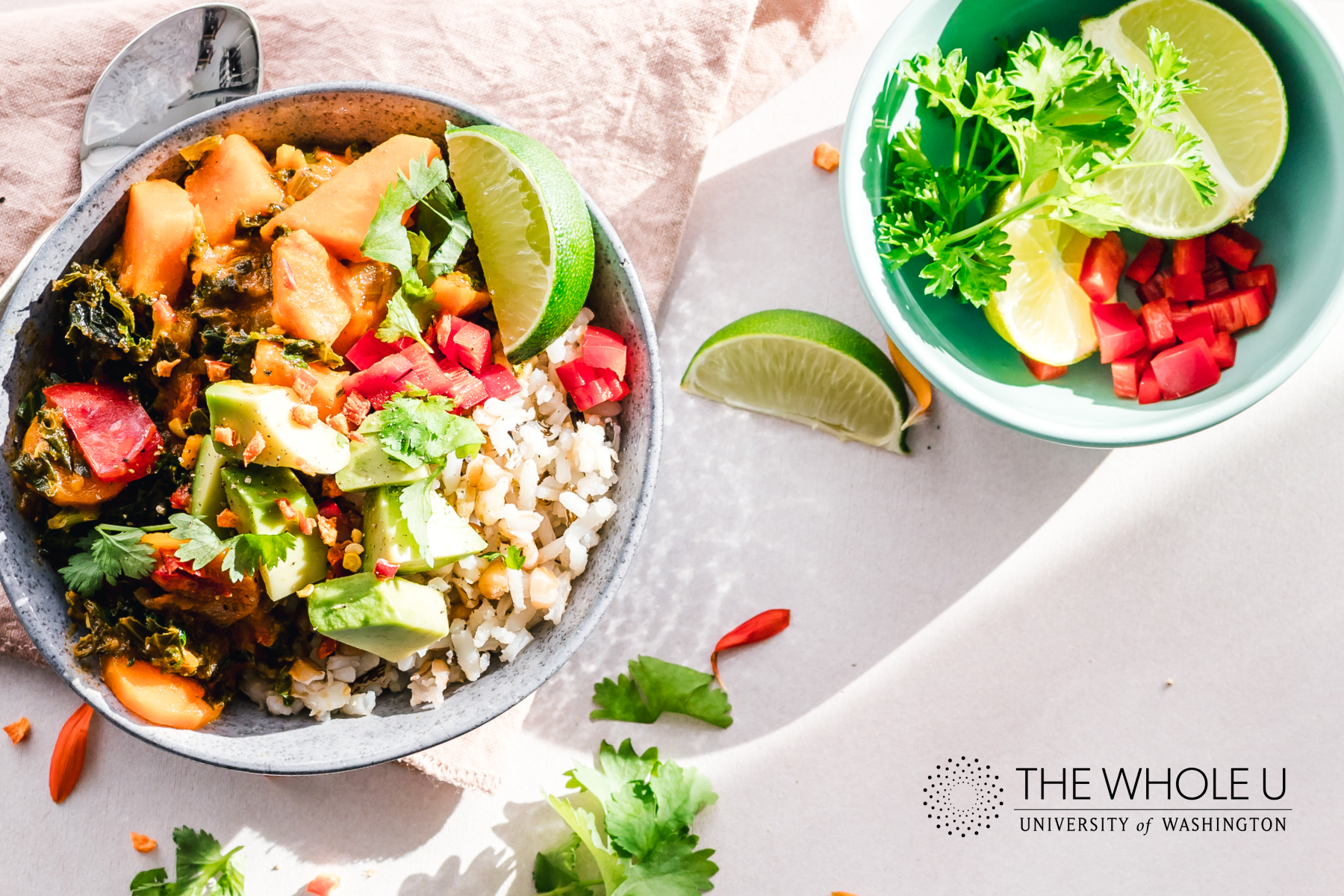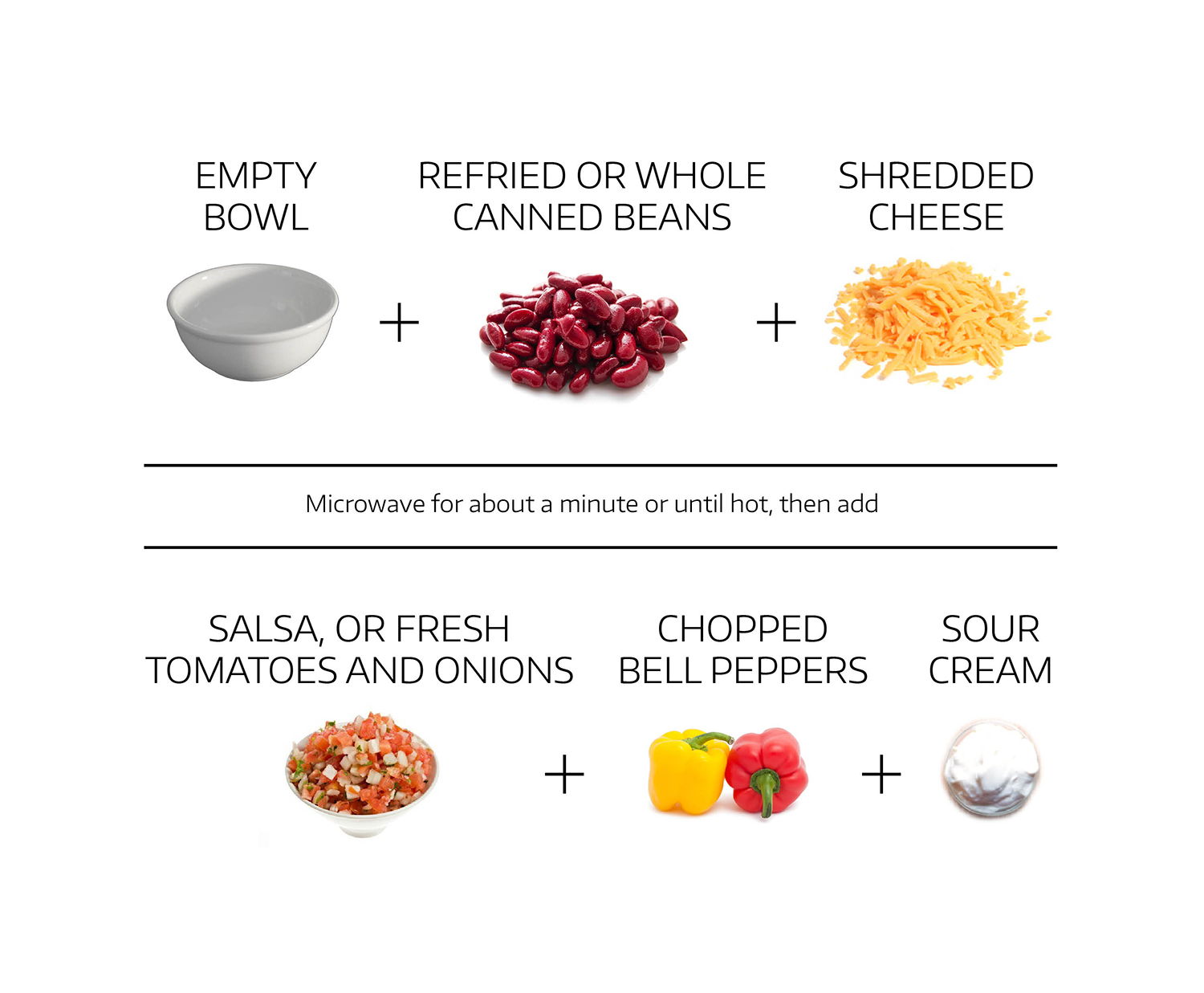
What Does a Healthy Dinner Look Like?
Now that we know what balanced breakfasts, lunches and snacks look like, let’s dive into dinner! We asked dietitian Ben Atkinson, manager of Outpatient Nutrition, Informatics, & Wellness in the Nutrition Services Department at Harborview Medical Center to point us in the right direction. He shared a few simple guidelines that make healthy dinners uncomplicated and eating well satisfying.
What foods make a nutritious dinner? What foods should I include?
Foods that constitute a nutritious dinner include items that you and your family enjoy eating. While it is fun and beneficial to include foods that are new to you or your family, you should always include foods that you enjoy.
We become satisfied by having enough food to eat. This includes enough total food, but also enough different types of food—some sweet, some savory, some crunchy, some warm, some cold—you get the idea! You need enough food, and you need a variety of food to make a meal that will be satisfying and nutritious.
What should my dinner never lack?
Your dinner should never lack planning. Even if you are just grabbing a quick meal at night, you should plan in advance to have some healthful and tasty food around for that quick meal.
What is the ideal balance of food groups?
You should aim to have at least 3 different kinds of food in your plate or bowl. This isn’t any kind of official government guideline (if you want that though, check out choosemyplate.gov/myplate for some great examples and advice), but if you do this, you’ll be doing way better than the majority of people in the US. I group foods into: proteins (meat, seafood, beans, nuts, meat substitutes like garden burgers or tofu), vegetables (broccoli, peppers, greens, tomatoes, carrots), fruits (bananas, apples, melons, oranges, grapes), grains (rice, potatoes, corn, pasta, bread, oats), and dairy (yogurt, cheese, milk and milk substitutes).
What foods should I limit/avoid?
There is a time and a place for most foods. Desserts, salty foods, sugary beverages, and processed foods are okay on rare occasions. Don’t feel horrible about eating these foods, but they should not be eaten at every meal. Enjoy them when you eat them, but don’t do so very often.
Do you have any tips on how to plan in advance?
Pick out some meals you want to eat this week. Get the ingredient list for them and make a shopping list. But my biggest advice is to know yourself. Do you like leftovers? If so, make a big batch of a recipe and save the rest in the fridge or freezer for later. This is great for quick meals that you can just heat up or throw together later that week. If you don’t like leftovers, you’re going to be cooking more often, so you may want to choose simpler recipes.
How do I make sure I don’t overeat without having to count calories?
Learn to listen to your body’s feedback about how full you are. A lot of us feel the need to eat a super-rich or super-fancy meal regularly, and feel the need to eat until we’re ‘Thanksgiving full’ (I know you know what this means—I sure do). You should be able to go do some physical activity after eating, and shouldn’t feel the need to go sit on the couch in elastic waist pants. Our bodies are pretty good at telling us how much to eat, we just need to listen a little closer.
Is there a best time to eat dinner? (i.e. earlier or closer to bed time to avoid late night snacking?)
The best time to eat dinner is when you’re hungry. There is nothing inherently bad about eating a late or early dinner. Eat when you’re hungry; don’t eat when you’re not.
Eating at home vs. eating out. Does it really make a big difference? What should I order when eating out?
Eating at home and making most of your meal yourself is the way to go. You have control over what goes into that food, whereas at a restaurant you don’t.
If you are eating out, though, and want to try to eat a more healthful meal, there are definitely things you can do. Try sharing a meal with someone. Eating family style meals in which a dish is purposefully brought out for friends or families to share (like many Thai or Vietnamese restaurants do in the Seattle area) can help in this endeavor. You can then control how much food ends up on your plate. I also focus on eating large servings of fruits or vegetables when I go out, since these tend to have less calories than meats or starches.
What is your favorite weekday dinner recipe?
I make ‘bean bowls’ (I haven’t figured out a catchy name for this yet). Add refried or whole canned beans to individual bowls, and add shredded cheese. Microwave that for about a minute or until hot. Add salsa or fresh tomatoes and onions, chopped bell peppers, and sour cream to the top. It’s easy, tastes good, my kids like it, and it has a nice variety of foods in it.

What is your favorite weekend dinner recipe?
I like making fried rice. I can use things that are leftover in the fridge from the past week (vegetables, tofu, meat, nuts), plus some eggs, and I’ve got a pretty complete meal. I can also use some different seasonings or sauces to make it taste different—curry seasonings, garlic and onions, fish sauce, or soy sauce. The trick to this dish is to remember to make a bunch of rice earlier in the week and let it sit in the fridge for at least a day. Using freshly made rice does not work at all!
Thank you, Ben, for showing us healthy dinners can be tasty, satisfying, and fun! This week, post your favorite healthy dinners on our Eating Well Facebook page to win one of an assortment of cool prizes!
One Thought on “What Does a Healthy Dinner Look Like?”
On March 27, 2017 at 10:08 AM, Kristi said:
Yummy dinner ideas!
Comments are closed.